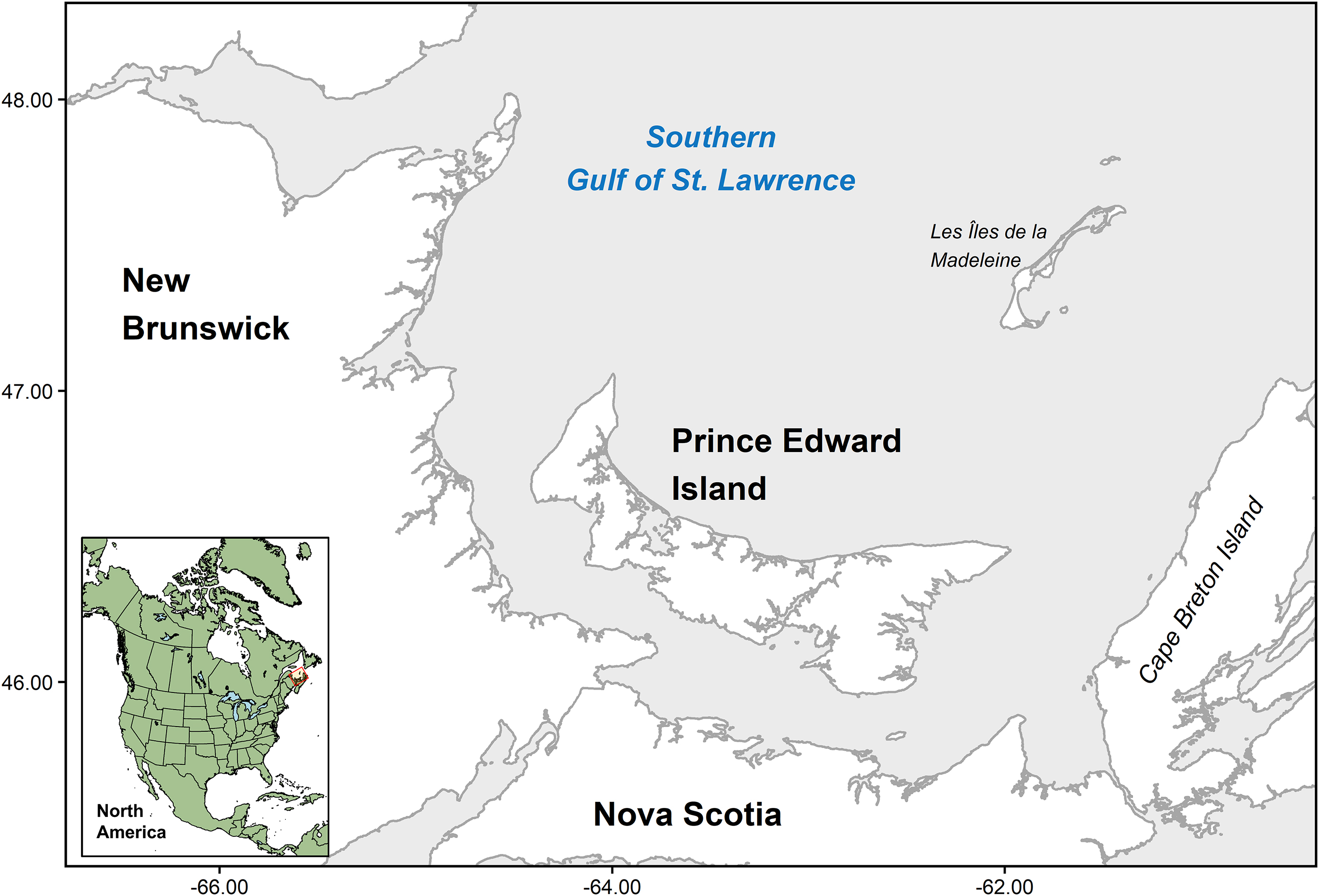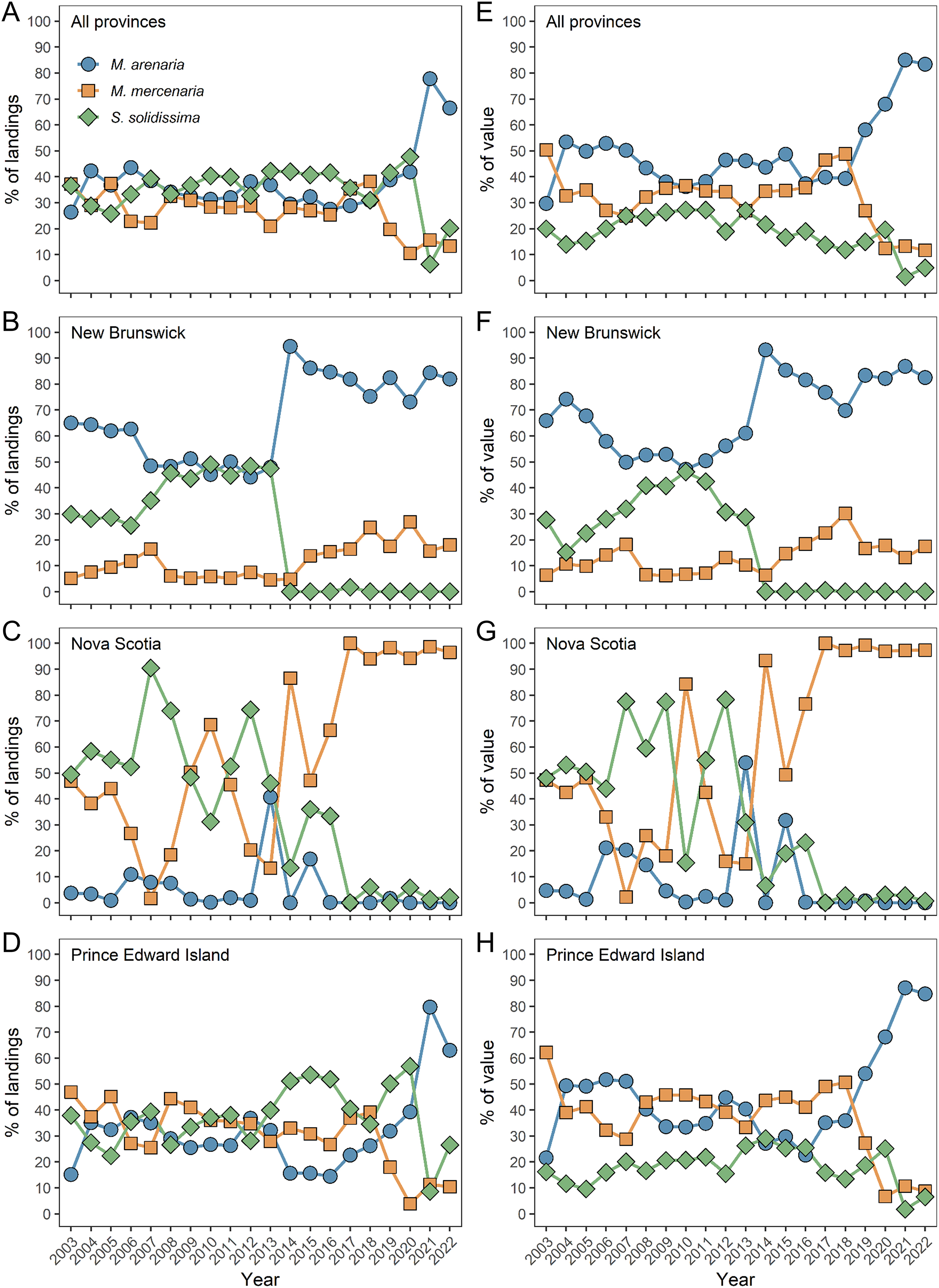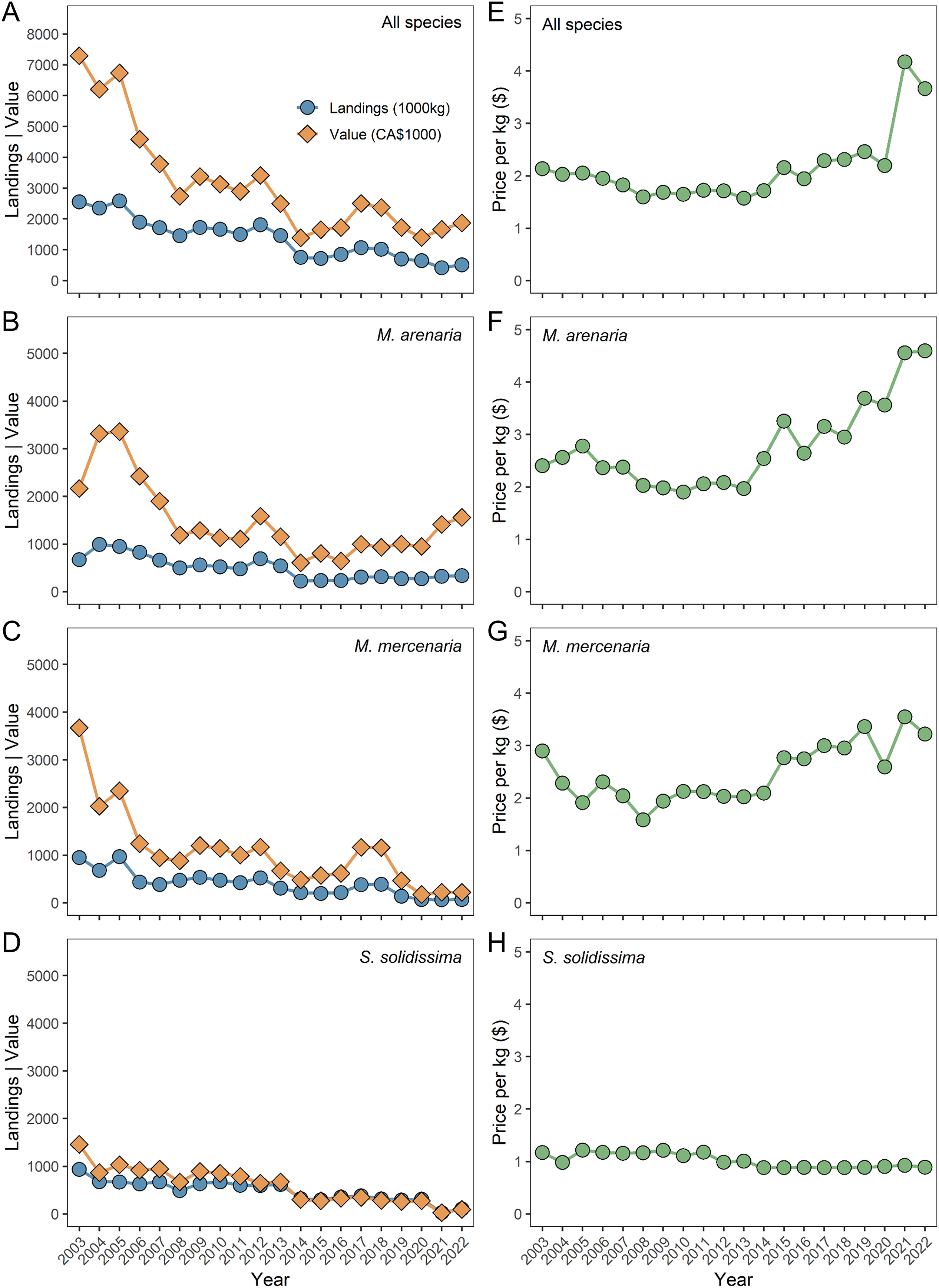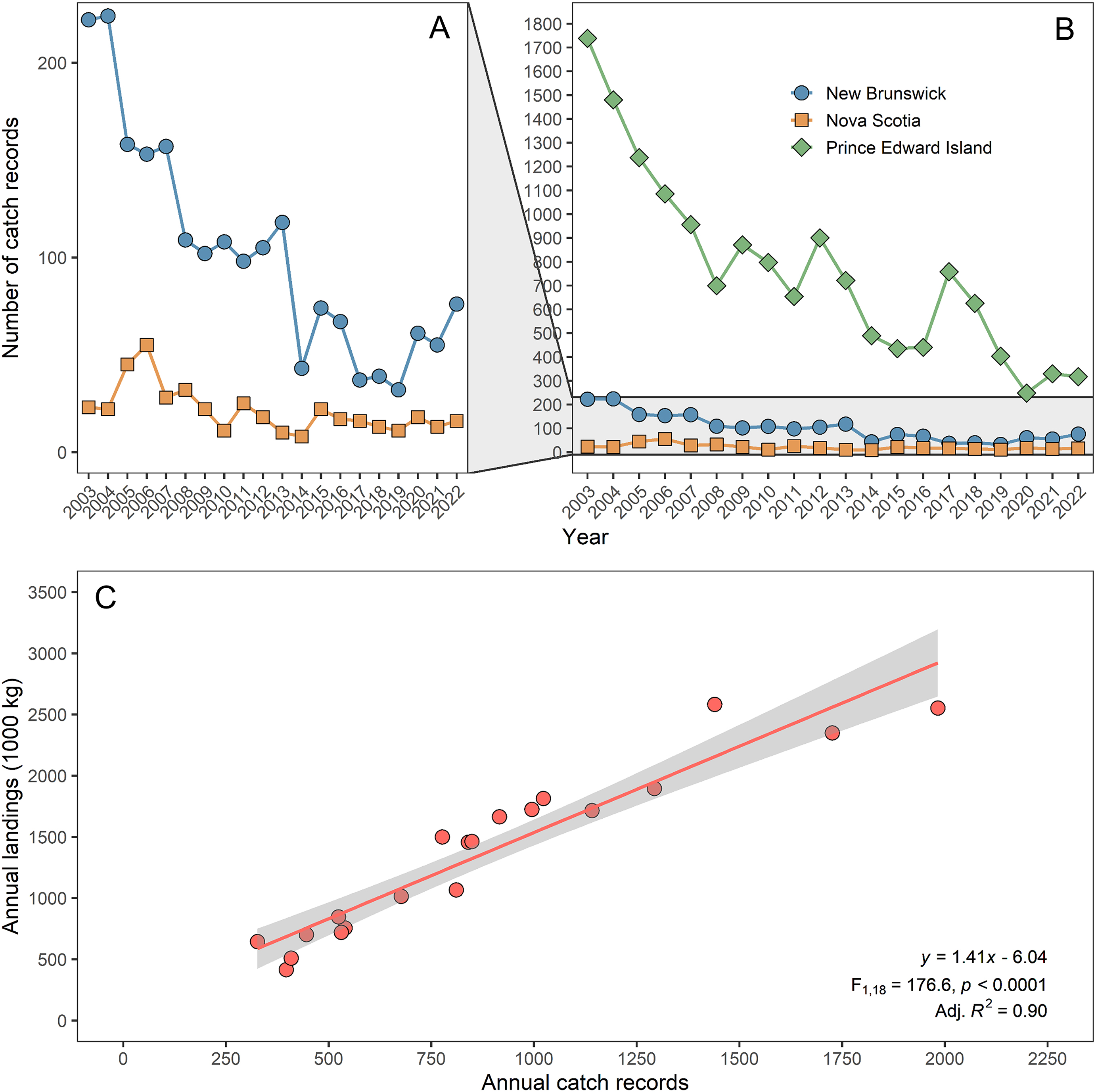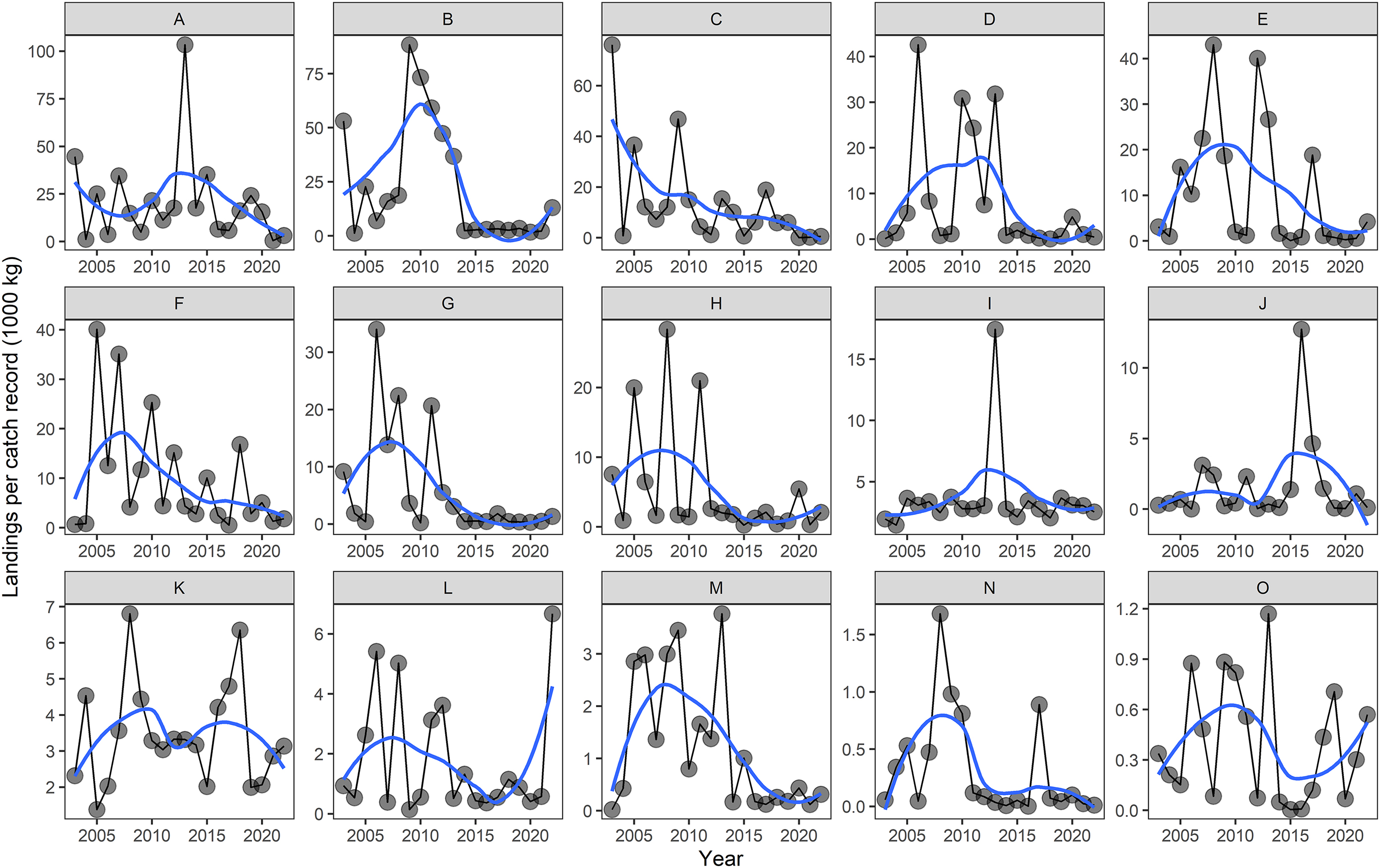Introduction
Small-scale fisheries, sometimes termed “artisanal” fisheries, play a crucial role in the livelihood, employment, and nutrition of coastal communities around the globe (
FAO 2018). Defined as “
fishing carried out by fishing vessels of an overall length of less than 12 m and not using towed fishing gear” (
Lloret et al. 2018; including non-vessel fishing from shore), small-scale fisheries account for ≈25% of catch volume (
Watson and Tidd 2018), ≈50% of fishing effort (
Rousseau et al. 2019a), and ≈90% of employment (
FAO 2015) for capture fisheries globally. Despite their importance, many small-scale fisheries have experienced declines (e.g.,
Silas et al. 2020;
Vianna et al. 2020;
Danquah et al. 2021;
Warren and Steenbergen 2021;
Castello et al. 2023;
Treer 2023), with climate and environmental changes being consistently reported as drivers of declines (
Silas et al. 2020;
Tidd et al. 2023). Quantifying trends in regional small-scale fisheries is thus important for understanding how the sociocultural and economic fabric of coastal communities are changing.
Small-scale fisheries can be comprised of many different taxa, including both fish and shellfish (among others). With respect to shellfish, bivalve molluscs such as clams are of particular ecological and socioeconomic importance. Clams are consumed as food in coastal regions across the globe and comprise >35% of global bivalve fisheries and aquaculture production globally (
Wisjman et al. 2019). Many nearshore communities rely on small-scale clam fisheries for regional income and subsistence (
Gianelli et al. 2015,
2021;
de Mattos et al. 2017;
Pittman et al. 2019;
Roa-Ureta et al. 2020). Clams also play important religious and cultural roles in many regions around the world (
Blanton 2023;
Lee 2023). Ecologically, clams reside in both marine and freshwater systems and provide key ecological services (
Vaughn 2018). For example, through their feeding and burrowing activity, clams couple benthic sedimentary habitats to the overlying water, oxygenating sediments, and cycling nutrients (
Vaughn and Hakenkamp 2008;
Lopes et al. 2018;
Carss et al. 2020). Furthermore, filter-feeding clams contribute to localized water quality through their feeding activity (
Cranford 2019).
The importance of clam fisheries certainly rings true in Atlantic Canada, where clam fishing is of historic economic and sociocultural importance. Both commercial and recreational fisheries for clams have existed in this region for centuries, with formal catch records of some species dating back to the 1800s (
Freeman 1997). Furthermore, clams are known to have been a key dietary resource for Indigenous communities in Atlantic Canada for thousands of years (
Prins 1996;
Freeman 1997;
Sullivan 2007;
Pictou 2015;
Googoo 2017) and were used by the Algonquians to make currency (i.e., “shell money”) and sacred jewelry (wampum;
Kurlansky 2006). An important management region for Atlantic Canada clam fisheries is the southern Gulf of St. Lawrence (sGSL; NAFO Division 4T), which is comprised of commercial fisheries in three provinces: New Brunswick (NB), Nova Scotia (NS), and Prince Edward Island (PEI) (
Fig. 1).
Contemporary commercial and recreational clam fisheries in the sGSL focus primarily on three species: soft-shell clams (
Mya arenaria), hard clams (or quahogs;
Mercenaria mercenaria), and surfclams (or bar clams;
Spisula solidissima). Historically, soft-shell clams have been the most economically important of these species, followed in sequence by surfclams, and hard clams (
DFO 2001). Fishing methods can vary but generally occur with the use of hands and/or hand-held tools, rakes, and hydraulic or mechanical dredging (
DFO 2022a); commercial diving for clams is not permitted for any species. Together with razor clams (or Atlantic jackknife clams;
Ensis leei), commercial fisheries for these four species are generally regulated and enforced by the Department of Fisheries and Oceans (DFO) under the
Maritime Provinces Fishery Regulations (hereafter MPFR), enacted by the
Fisheries Act (
DFO 2022a); however, exceptions exist, and clam fisheries management in this region is complex. Herein, commercial wild (public beds) clam fisheries are managed by species and province via restrictions on harvesting methods (i.e., no diving), designated fishing seasons, daily catch limits, and minimum size limits (
DFO 2022a;
Table 1).
While management measures are specified in the MPFR, regional management plans can further restrict these regulations through “variation orders” which allow for amending, for example, open and close times, quotas, and/or size limits for a fishery. For example, in NB, management measures are varied from the MPFR and are detailed in the “2022–2024—Clam Management Plan for Eastern New Brunswick” (
DFO 2022b). Specific area closures can also be enacted on the bed scale and involve collaborative efforts between multiple federal departments including the Canadian Food Inspection Agency (CFIA), Environment and Climate Change Canada (ECCC), and DFO via the Canadian Shellfish Sanitation Program (
CFIA 2023). Herein, areas can be closed due to contamination based on the presence of bacteria, toxins, chemicals, or other potentially-harmful substances (
DFO 2022c,
2024;
CFIA 2023); real-time area closures for the public fisheries can be accessed through DFO’s Shellfish Harvesting Extent Longitude, Latitude, Information (“SHELLI”) map (
DFO 2018). For some of these closed areas (depending on the type and degree of contamination), “relay fisheries” can exist, where clam fishers harvest from public beds or aquaculture leases and “relay” that catch to processors who subsequently depurate the clams and sell them to market. In the sGSL, these fisheries exist for soft-shell clams in NB, soft-shell clams and quahogs in PEI, and quahogs in NS. For relay fisheries, the MCFR applies (
DFO 2024), and the fishing season is based on an approved decontamination plan which ensures that the product will be decontaminated and safe for human consumption. It is also important to note here that while this paper details trends in commercial clam fisheries, sizeable recreational clam fisheries exist in the sGSL as well. Management measures for recreational fisheries are detailed in the “Conservation Measures for clams in eastern New Brunswick, Gulf Nova Scotia and Prince Edward Island” (
DFO 2022c).
While regular stock assessments are conducted for some clam species in other DFO Management Regions (e.g.,
DFO 2022d;
Brulotte 2023), assessments of clam populations and fisheries are few and far between for the Gulf Region. For example, the last published population assessment conducted by the DFO occurred between 2010 and 2013 at a single clam bed, focusing on a single species (
Mya arenaria;
Leblanc 2015), as part of monitoring a specific habitat restoration project. Likewise, the last known report documenting clam landings trends in the sGSL was published more than a decade ago, also focusing solely on soft-shell clams in three specific areas of eastern New Brunswick (
Hicks and Ouellette 2011). Formal stock status reports for clam species in this region are also lacking, with the most recent stock status reports dating back to 1996–1997 (
Landry 1996;
Landry and Sephton 1996;
Sephton 1996). A contemporary analysis of landings trends is thus warranted.
To address this knowledge gap, I provide a synthesis of reported landings trends for commercial clam fisheries in the sGSL over the past two decades (2003–2022). While reported landings data come with some issues (e.g.,
de Mutsert et al. 2008;
Branch et al. 2010), they can be useful for understanding fishery-specific trends over time and, in some cases, may be reflective of species populations (when effort is measurable and consistent; see debate in
Pauly et al. 2013). Notwithstanding, the goal of this exercise was to analyze and document reported landings trends and their associated value for sGSL clam fisheries. I discuss observed landings trends in the context of sGSL clam populations; however, general conclusions regarding the status of clam populations and stock dynamics require more direct population assessments and should not be inferred from these data.
Discussion
This study ultimately documents dynamic shifts in the makeup of regional clam fisheries during a time of declining landings. Whether the landings declines reported here are due to declining fishing effort, declining clam populations, or a combination of both awaits more direct research. Furthermore, if populations are indeed declining in the region, the underlying reasons for this should be explored. Contemporary studies comparing these results to other clam fisheries across the globe, and other small-scale fisheries more broadly, are warranted.
The relative contributions of the three provinces to sGSL commercial clam landings have been unwavering over the past 20 years. Herein, PEI is the most significant contributor of clam landings and value in the sGSL, followed by NB and NS; however, NS contributions have been negligible compared to NB and PEI. The reasons for such stable and disproportionate provincial contributions are not clear at this time; however, it is interesting that declining landings have not resulted in any detectable changes in relative provincial contributions.
In contrast to relatively stable provincial contributions, species contributions to landings and value in the sGSL have shown dramatic changes over the past 20 years. Most notably, considering the region as a whole, sGSL clam fisheries appear to have shifted from a tri-species makeup with equitable contributions from
Mya arenaria,
Mercenaria mercenaria, and
Spisula solidissima to a largely singe-species makeup dominated by
Mya arenaria since 2020. While reasons for this shift in species contributions are not conclusively documented, the rising market value (price per kg) of
Mya arenaria may be influencing such a shift. Indeed, the increased price of
Mya arenaria was enough to offset the decline in landed value of
Mya arenaria in PEI in recent years (i.e., increased landed value of
Mya arenaria in 2021–2022;
Figs. 4 and
5). While the price of
Mercenaria mercenaria has also increased in recent years, it has not done so to the degree that
Mya arenaria has, and this smaller increase for
Mercenaria mercenaria was not enough to offset declining landed value. Further, the price per kg of
S. solidissima has remained fairly steady over time, displaying a very slight decrease over the time series, which may explain the sharp crash in landings for this species. Alongside market changes, it is also possible that an aging demographic of clam diggers (as highlighted in recent clam resource management meetings; formal reference unavailable) may partly influence shifts in species. For example, differences in the cost and physical difficulty to fish various clam species may drive older clam diggers to focus on species that are easier to access and less physically demanding to harvest. Furthermore, the drastic shift toward a single species harvest in PEI also coincides with the timing of the COVID-19 pandemic, which has had drastic impacts on small-scale fisheries and coastal fishing communities worldwide (
Bennett et al. 2020). Herein,
Mya arenaria and
Mercenaria mercenaria beds are easy to access from shore and are primarily fished by hand (
PEI Shellfish Association 2023). In contrast, the vast majority of commercial
S. solidissima catch has historically come from draggers (i.e., fishing vessels with drag gear;
Annands 2021), which are likely cost prohibitive, especially given the stagnant market value of
S. solidissima and the rise of economic inflation. It is thus possible that the economic impacts of the COVID-19 pandemic (i.e., drastic increases in the price of goods and materials;
Bilyk et al. 2024) may have facilitated the observed shift toward less cost-prohibitive species such as soft-shell clams and quahogs. It is important to note, however, that the observed shifts in species contributions to the sGSL as a whole did not hold true for each of the individual provinces, as NB shifted to predominantly
Mya arenaria much earlier than PEI, while NS was completely dominated by
Mercenaria mercenaria. Thus, localized sociocultural and socioeconomic dynamics likely influence the makeup of clam fisheries within each province, with the sGSL-wide shift being predominantly driven by PEI. Ultimately, shifting dynamics between the socioeconomic costs and benefits of harvesting different clam species, as well as an aging fisher demographic, have likely influenced the observed shifts in species composition of sGSL clam fisheries.
The results of this analysis ultimately underscore a declining fishery in Atlantic Canada. Over the past 20 years, reported landings have declined by >80% for the sGSL as a whole, with declines occurring for each individual province and each of the three primary fished species in the region. Likewise, catch records (i.e., active licenses + Supplement B reports; proxy of fishing effort) have also declined over this time period, and there was a strong relationship between annual catch records and annual landings. Declines in small-scale fisheries landings are not unique and there are many recent reports of such trends for such fisheries around the world (e.g.,
Vianna et al. 2020;
Danquah et al. 2021;
Warren and Steenbergen 2021;
Castello et al. 2023;
Treer 2023).
While definitive reasons for the decline of sGSL commercial clam fisheries cannot be obtained from the data herein, the drastic decline in catch records certainly suggests a lack of fishing activity in this region. Similar trends have recently been highlighted for other small-scale fisheries as well. For example,
Treer (2023) reported declines in landings and CPUE for a Croatian small-scale fishery (multi-species), citing a lack of activity—driven by low harvest potential—as one of the likely reasons for catches. What is unclear, however, is what may be driving the lack of activity in sGSL clam fisheries. Low activity in commercial sGSL clam fisheries may be driven by a desire to fish more lucrative species; however, the price per kg, particularly for soft-shell clams, is currently fairly high compared to previous years and has been steadily increasing. On the other hand, declining activity in clam fisheries may be due to increasing costs to enter them. An aging population of clam diggers may also drive lower activity, as older diggers exiting the fisheries are not replenished by new, younger diggers pursuing more viable careers. The lack of fishing activity could also be due to declining clam populations in the region (see paragraph below for discussion), making it more difficult for clam diggers to adequately harvest financially-viable catches. Conversely, a lack of activity in commercial fisheries may be offset by increasing activity in recreational clam fisheries. Unfortunately, data on recreational fisheries in this region are non-existent, and it is not possible to determine what role recreational fisheries may have on the observed changes in commercial fisheries documented in this study. Finally, while shifts in species composition coincided with the COVID-19 pandemic, there was no evidence of the pandemic influencing fishery landings or catch record declines outside the margin of error of other years. Indeed, the largest single-year decline in landings (all species and all provinces combined) occurred between 2005 and 2006, and the largest single-year decline in catch records occurred between 2014 and 2015. In fact, the number of catch records actually increased by 70 between 2019 and 2020. Whatever the reason, declining activity in clam fishing is concerning for the future of commercial clam fisheries—a sociocultural staple for this region. While temporary breaks in fishing may be good for the conservation of these species, studies suggest that clam digging may actually benefit clam populations by facilitating and enhancing sediment quality (
Clements et al. 2021). The inclusion of clam fisheries in programs which are aimed at helping new fishers enter the industry, such as the Future Fisher Program on PEI (
Spencer 2023;
Government of Prince Edward Island 2024), could potentially facilitate new interest in sGSL clam fisheries.
Although causative relationships between landings and population abundances cannot be strictly made from the data herein, there is some evidence to suggest that clam populations may be declining in the sGSL. Firstly, the consistent declining trends in landings per catch record (proxy of CPUE) across multiple landing places in the sGSL suggest that it is becoming increasingly difficult to fish clams in this region. This idea is further supported by anecdotal conversations with local clam diggers, who have voiced concerns about difficulties in finding clams in recent years (both publicly and directly to me in personal conversations). Furthermore, annual survey data from Kouchibouguac National Park in NB, where clam digging is stringently controlled, suggest that population abundances of soft-shell clams (Mya arenaria) have indeed declined for the past 20 years (Parks Canada, unpublished data). Thus, while population status cannot be directly inferred from landings data, there is evidence to support the idea that clam populations in this region may be declining.
If populations in the region are declining, it is critical to understand why. There are many factors that can affect clam populations, and it is difficult to pinpoint a single cause for a decline. In reality, declines often happen due to a multitude of reasons and there are multiple issues in the sGSL that can contribute to declining clam populations. Overexploitation is always a concern, but without a lack of historical data or dta on recreational fisheries, I cannot confidently attribute the patterns herein to overexploitation. Nonetheless, concerns about overexploitation of some clam stocks in the sGSL have been raised in the past (
Landry 1996). Indirect fishing mortality of sub-legal sized clams could also contribute to population declines as reproductive stock could be negatively affected; however, such mortality is reported to be low (<20%;
Robinson and Rowell 1990;
Landry and Ouellette 1993). In the scientific literature, climate change is also a primary factor of consideration in declining fishery landings. For example, rising temperatures due to climate change may play a role in clam declines, as increasing air and seawater temperatures can negatively affect the physiology of bivalves in the sGSL and make them less robust to other environmental impacts (e.g.,
Clements et al. 2018a,
2018b;
Clements and Hunt 2023;
Talevi et al. 2023). Warming is particularly relevant for clams in the sGSL, as it is well documented that waters in the sGSL are warming rapidly (
Galbraith et al. 2022,
2023,
2024). Furthermore, most clam beds are found in intertidal and shallow subtidal (<1 m) waters, which would amplify temperature effects (i.e., shallow waters warm quickly, and extreme air temperatures pose a significant threat in the intertidal zone). Eutrophication, a driver of increasing concern in the sGSL (
McIver et al. 2015;
Coffin et al. 2021), could also contribute to clam declines in this region, as low oxygen conditions and increasing abundances of algal species such as sea lettuce are known to negatively affect clam recruitment and burrowing behaviour (
Auffrey et al. 2004;
Robinson et al. 2005). Sea level rise, coupled with an increasing frequency and severity of storms, can pose a threat to clam beds via physical damage and habitat destruction (
Zhang et al. 2021). Finally, biologically-mediated ecological changes such as invasive species may contribute to population declines. Herein, the establishment and rapid rise of invasive European green crabs (
Carcinus maenas) in the region (
Poirier et al. 2017) could certainly contribute to clam population declines. This is particularly apparent for soft-shell clams, as
C. maenas predation is generally considered the most important factor in soft-shell clam declines in the northeastern United States (
Beal et al. 2018). It is important to note, however, that all of these potential causes remain speculative, and understanding the direct causes of clam declines in the sGSL, should they actually be occurring, require further in-depth research.
A stated previously, landings data do not necessarily indicate population or stock status (
de Mutsert et al. 2008;
Branch et al. 2010;
Pauly et al. 2013). Indeed, landings data come with many uncertainties, owing to inaccuracies and mistakes in reported catches and/or sales, a lack of detail on fishing methods and effort, and the influence of various external factors such as regulatory changes, market shifts, and environmental variability. More detailed information related to fishing effort, including fishing hours and the location and area coverage of fishing activities, could provide the necessary data to measure population status. Furthermore, requiring such information for recreational fisheries could provide more robust information regarding the true impact of clam digging in this region, as commercial landings alone underestimate the true impact of fishing. While it may not be feasible to require such information from commercial and recreational clam diggers, building respectful and fruitful collaborations with individual diggers who may be willing to share such information can provide a first step in this process. Additionally, supplementing landings data with fishery-independent population assessments is reported to increase the accuracy of population assessments (
Vecchio et al. 2023). While bed-scale assessments of sGSL clams have been conducted in the past (
Hicks and Ouellette 2011;
LeBlanc 2015), fishery-independent clam surveys have largely been absent over the past decade, most probably due to limited resources and the labour-intensive nature of sampling clam beds. Collaborative efforts between various government, non-government, industry, academic, and/or community groups are necessary to increase the scope and frequency of surveys. Resources for such collaborative surveys are limited, however, and require investment from a broad suite of stakeholders. The development of efficient and cost-effective assessment methods, such as using visible siphon holes to estimate clam density (
Clements et al. 2024), can help reduce costs and facilitate fishery-independent assessments moving forward.
While the results presented here are regional in focus, they provide a cautionary tale for small-scale clam fisheries elsewhere across the globe. Given their ecology, clam fisheries worldwide–particularly those in shallow, intertidal waters–may be vulnerable to the impacts described here. It is thus important to document such fishery declines in a standardized manner to better understand the impacts of declining clam fisheries on global small-scale fisheries production (
Rousseau et al. 2019b).
